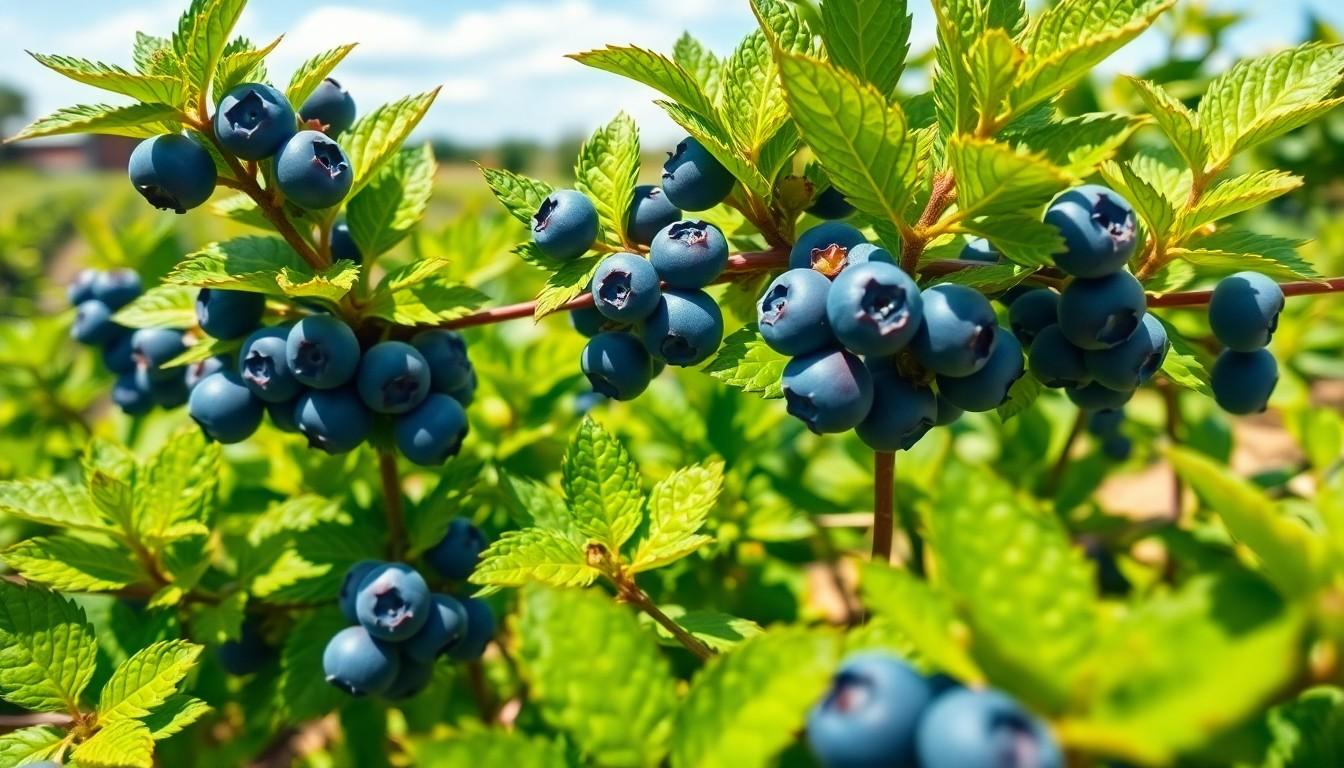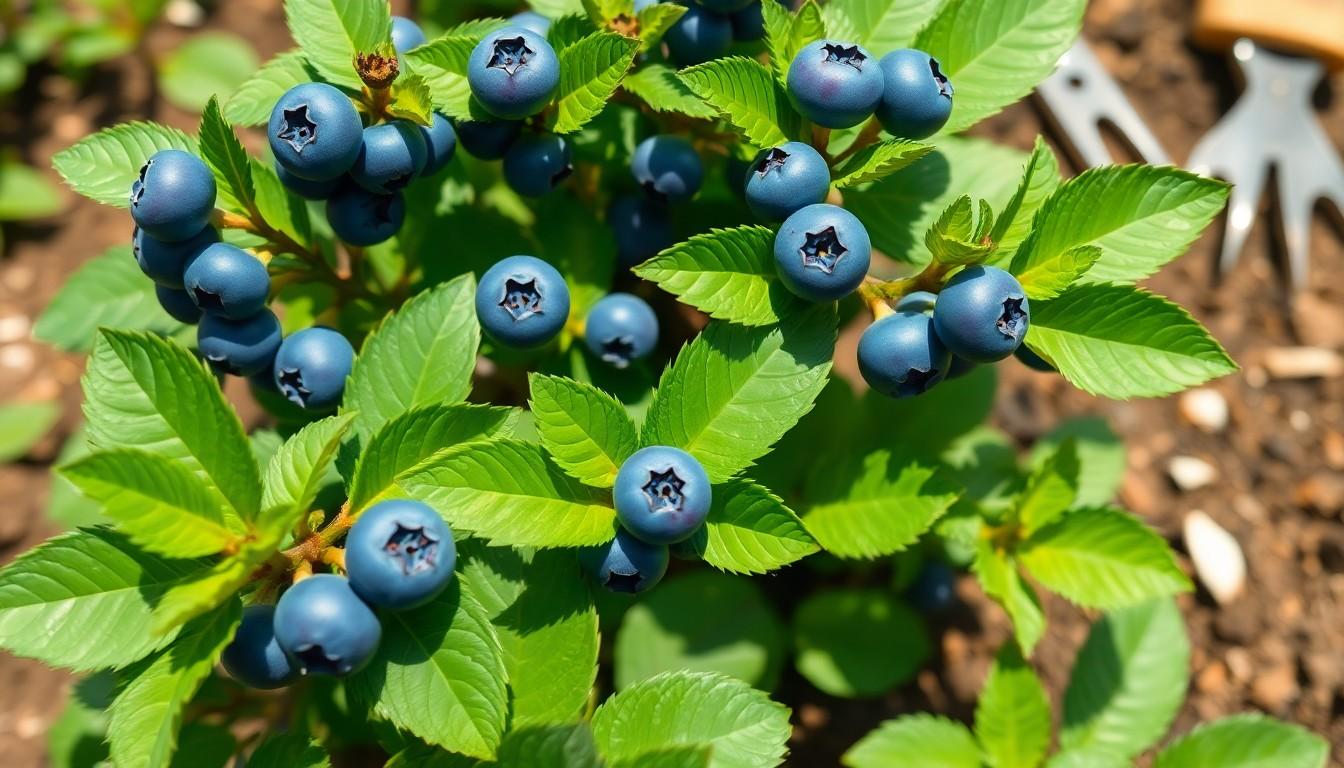Blueberry plants are a gardener’s dream, bursting with flavor and health benefits. But just like any great hero, they face their share of villains—diseases that can wreak havoc on their luscious berries. Imagine nurturing your plants only to discover they’re under attack from sneaky pathogens. It’s like finding out your favorite superhero has a kryptonite weakness.
Understanding blueberry plant diseases is crucial for any gardener who wants to enjoy a bountiful harvest. From leaf spots to root rot, these pesky issues can turn a thriving garden into a sad, berry-less landscape. But fear not! With the right knowledge and a dash of humor, anyone can combat these foes and keep their plants healthy. Let’s dive into the world of blueberry plant diseases and arm ourselves with the tools needed to protect those precious berries.
Overview of Blueberry Plant Diseases
Blueberry plants are susceptible to a variety of diseases that can significantly impact their growth and yield. Leaf spots caused by fungi or bacteria lead to premature leaf drop, weakening the plant’s overall health. Root rot is another common issue, often stemming from overwatering or poorly drained soil conditions, which can suffocate roots and inhibit nutrient uptake.
Fungal diseases such as powdery mildew affect leaves and stems, creating a white, powdery coating that disrupts photosynthesis. This results in stunted growth and smaller fruit. Additionally, fruit molds, including botrytis, can cause severe damage during storage and lead to fruit loss.
Bacterial components, like bacterial blight, manifest as wilting and brown streaking on leaves. This disease spreads rapidly and requires immediate attention to manage its effects. Viruses may also pose a threat, including the blueberry scorch virus, which disrupts plant functions and reduces fruit quality.
Effective management of blueberry diseases involves monitoring the plants regularly and implementing preventive measures. Crop rotation and selecting disease-resistant cultivars can reduce the prevalence of these issues. Additionally, providing adequate air circulation and avoiding waterlogged soils promotes a healthier environment for blueberry plants.
Gardeners benefit from acquiring knowledge about these diseases. Understanding the specific signs and symptoms aids in timely intervention and treatment strategies. Developing a proactive approach helps maintain the vitality of blueberry plants, ensuring healthier crops and improved yields.
Common Diseases Affecting Blueberry Plants

Blueberry plants face several diseases that can significantly impact their health and productivity. Understanding these diseases helps growers improve yields and maintain plant vitality.
Fungal Diseases
Fungal diseases pose a significant threat to blueberry plants. Powdery mildew appears as white, powdery spots on leaves and can hinder photosynthesis, reducing overall growth. Botrytis blight, another fungal issue, affects ripe fruit, causing gray mold during high humidity. Leaf spots, often caused by fungi, lead to premature leaf drop and weaken the plant. Regular monitoring and proper airflow can help manage these issues effectively.
Bacterial Diseases
Bacterial diseases can severely affect blueberry health. Bacterial blight is characterized by wilting and browning of leaves, often requiring immediate intervention to prevent significant plant damage. Ensuring good sanitation and removing infected plants reduces the risk of spread. Bacterial canker, another concern, leads to dieback in branches and requires prompt management to maintain plant integrity. Preventative measures are essential to protect plants from these harmful bacteria.
Viral Diseases
Viral diseases also threaten blueberries, notably the blueberry scorch virus. This virus causes yellowing of leaves and stunted growth, negatively impacting fruit quality. Regular inspection for early signs ensures prompt action against virus spread. It’s critical to eliminate infected plants swiftly to protect healthy ones. Additionally, using resistant cultivars when planting helps mitigate the risk of viral infections. Effective monitoring and education empower growers to tackle these viral challenges efficiently.
Symptoms and Diagnosis
Recognizing symptoms of blueberry plant diseases plays a crucial role in effective management. Common indicators often include discoloration, wilting, and abnormal growth patterns.
Identifying Disease Symptoms
Leaf spots frequently manifest as dark or yellow patches, signaling fungal infections or bacterial issues. Wilting may indicate bacterial blight or root rot, necessitating immediate attention. Powdery mildew appears as white, powdery spots on leaves, disrupting photosynthesis. Infections can also result in fruit molds, which affect fruit quality and yield. Additionally, yellowing leaves may indicate viral infections like blueberry scorch virus. Regular inspections help catch these symptoms early, allowing for prompt intervention.
Diagnostic Methods
Microscopic examinations assist in identifying specific pathogens affecting blueberry plants. Soil tests can reveal the presence of pathogens or nutrient deficiencies, guiding corrective actions. Visual assessments identify symptoms and compare them against known disease profiles. Observations of environmental conditions contribute to understanding disease risk factors. Furthermore, sending samples to a diagnostic lab provides accurate pathogen identification. Using these methods helps growers develop targeted management strategies for maintaining plant health.
Prevention and Management Strategies
Effective prevention and management strategies play a key role in safeguarding blueberry plants from diseases. By employing cultural practices and chemical treatments, growers can enhance plant health and yield.
Cultural Practices
Implementing proper cultural practices significantly reduces disease incidence. Crop rotation helps break the life cycles of pathogens. Selecting disease-resistant cultivars minimizes risks associated with specific diseases. Regularly inspecting plants for early signs of disease allows for timely intervention. Maintaining optimal soil drainage prevents root rot and other moisture-related issues. Pruning overcrowded branches improves air circulation, reducing humidity and disease pressure. Fertilizing appropriately strengthens plant vigor, making them less susceptible to infections.
Chemical Treatments
Utilizing chemical treatments effectively complements cultural practices. Fungicides specifically target fungal diseases such as powdery mildew and botrytis blight. Bactericides assist in controlling bacterial threats like bacterial blight and canker. Timing of applications impacts effectiveness; treating at the first sign of disease provides the best results. Following label instructions ensures proper usage and adherence to safety guidelines. Rotate chemical classes to prevent resistance development in pathogens. Integrated pest management strategies combine cultural methods with selective chemical treatments for optimal results.
Conclusion
Understanding blueberry plant diseases is vital for any gardener aiming for a fruitful harvest. By recognizing symptoms early and implementing effective management strategies, growers can significantly reduce the impact of these diseases. Regular monitoring and adopting preventive measures will not only protect the plants but also enhance their overall productivity.
With the right knowledge and practices in place, maintaining healthy blueberry plants becomes achievable. Gardeners should remain proactive and informed to ensure their blueberry crops thrive despite the challenges posed by various diseases. Healthy plants lead to bountiful yields and a rewarding gardening experience.

